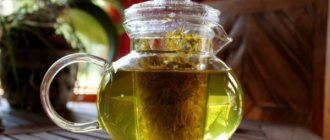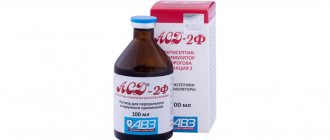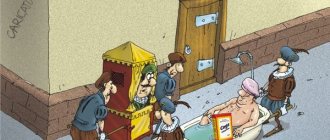Erva woolly, otherwise called half-palmed, is a herbaceous biennial from the Amaranthaceae family. The plant loves hot, humid climates. Its homeland is Sri Lanka; half of it also grows in African countries, Australia, India, New Guinea and Indonesia. It is not found in the wild on the territory of the Russian Federation. The medicinal properties and contraindications of pol-pal grass were known and widely used by healers of local tribes. It was these ancient recipes that formed the basis of modern treatment methods.
Comment! For Russians, the easiest way to find half-palmed grass is to purchase ready-made raw materials at a herbal pharmacy.
Chemical composition of half-burnt
Paula grass is a storehouse of substances beneficial to the human body. It rightfully occupies a leading position among medicinal herbs - thanks to its rich chemical composition. It contains the following substances:
- micro- and macroelements – calcium, potassium;
- indole alkaloids – methylervin and ervin, ervoside, ervolanine;
- flavonoids – acyl glycoside tiliroside, ervitrin, narcissin;
- phenolic acids;
- complete sugars, pectin;
- essential amino acids;
- alkanes, oleanoic acid;
- mineral salts.
Important! The herb contains a high percentage of potassium nitrate, which makes it an excellent potassium-sparing diuretic (diuretic).
Method of preparing decoction and infusion of Erva woolly
Typically, pharmacy packages contain detailed step-by-step instructions, which provide two methods for preparing the medicine at home.
The herbal decoction can be infused in a water bath. This is done like this:
- Pour 2 tbsp into a glass or enamel container. half a tablespoon of dried herb;
- The product is poured with 1 cup of boiling water;
- Then the container is placed in a pan of boiling water for 15-20 minutes;
- The finished broth is left for half an hour so that it can brew and cool;
- Add a little more boiled water to the resulting drink, so that the amount of the finished product is equal to 200 ml.
With the second method, an infusion is obtained; half the grass is infused in a thermos. The correct sequence of actions should be as follows:
- Pour 2 tablespoons of dry herbs into a thermos;
- The drug is poured with a glass of boiling water;
- The thermos is closed and left for an hour and a half so that the product is well infused.
The herbal decoction is suitable for use for only one day; it is not advisable to store it longer. You need to brew just enough herbs to last for three doses.
The benefits of the herb are gone
Official medicine recommends treatment with pol-pal herb in the presence of urolithiasis and cholelithiasis. But herbalists are not limited to just the diuretic effects of the herb. Infusions, decoctions and teas with herbs have a beneficial effect on all organs and systems of the human body, restoring and normalizing their activity.
We recommend reading: Mint tea: beneficial properties and contraindications, how to make
The plant has the following properties:
- stabilizes heart function and normalizes blood pressure, improves blood clotting;
- restores natural water-salt balance;
- has antimicrobial, analgesic and anti-inflammatory effects;
- the half-burnt herb improves the regeneration of skin tissue and has a pronounced wound-healing effect;
- cleanses the body, removes toxins and waste products;
- strengthens the walls of blood vessels, prevents the appearance of atherosclerotic plaques, improves the functioning of the adrenal glands;
- restores a weakened body, tones, strengthens the immune system;
- normalizes hemoglobin levels, prevents the formation of stones and clots in the gallbladder and ducts, in the kidneys;
- has a pronounced antitumor effect and prevents the development of cancer cells.
Attention! According to statistics, cancer rates in Ceylon are consistently lower than in most countries in the world. Russian researchers attribute this fact to the frequent use of this herb as a medicine.
The herb is often used in the complex treatment of obesity at various stages
Medicinal properties
- Antiseptic;
- diuretic;
- choleretic;
- bacteriostatic;
- anti-inflammatory;
- immunostimulating;
- antioxidant;
- antitumor;
- normalization of sex hormone levels;
- antispasmodic;
- hepatoprotective;
- cleansing;
- regenerative;
- wound healing;
- maintaining water-salt balance;
- normalization of metabolism;
- strengthening blood vessels.
The harm is half done
It should be noted that, despite all the medicinal properties, taking half-palm can have negative consequences:
- a decoction of the plant can thin tooth enamel;
- there are frequent cases of allergic rashes and swelling to various components of the plant;
- In case of an overdose, nausea, vomiting, and dehydration are possible.
When treating with chemicals, especially diuretics, it is recommended to drink half a dozen decoctions of raw materials under the close supervision of a specialist, since an enhancing or inhibitory effect is possible.
Contraindications to the use of pol-paly
Half-burnt grass has a number of restrictions on its use:
- children under 12 years of age;
- pregnancy at any stage, the period of feeding the baby with breast milk;
- identified osteoporosis – thinning of bone tissue;
- hypercalcemia;
- renal osteodystrophy and hypoparathyroidism;
- individual intolerance with severe allergic reactions.
Attention! It is prohibited to take drugs based on pol-paly orally in the presence of large stones in the gall bladder or kidneys - death is possible.
Description and chemical composition
The grass is similar to a weed plant, but has a rich chemical composition .
It blooms with small pale flowers. It is a heat-loving plant and comes to Russia only in dried form. Initially, the herb was used to treat snake bites; later, various medicines for almost all diseases began to be prepared on the basis of pol-palm.
The medicinal plant contains:
- Alkaloids.
- Flavonoids.
- Sahara.
- Plant acids.
- Tannins.
- Amino acids.
- Salt.
All these components are responsible for cleansing the body of waste and toxins, thinning the blood and improving its chemical composition. Regular consumption of the herbaceous plant helps to increase life expectancy and improve its quality. The nervous system is strengthened and the general condition of the body improves.
Release form
Plant raw materials in packs from 30 g to 100 g.
pharmachologic effect
Diuretic.
How to take half-palmed grass
In order for the course of treatment with herbal decoctions to be effective and not cause harm to the body, you should adhere to some rules:
- raw materials must be of a natural greenish-yellow color, without black inclusions, mold, or foreign odors;
- to prepare the medicine, you need to take 20 g of raw material, pour a glass of boiling water, and heat it in a water bath for 20 minutes, after an hour, strain and squeeze out the raw material, add boiled water to the original volume;
- recommended doses for adults - 50-100 ml 3 times a day, children from 12 to 14 years old - 20 ml 3 times a day, from 14 years old - 40 ml;
- Take infusions and decoctions half an hour before meals;
- drink through a straw, rinse your mouth thoroughly after drinking;
- the finished infusion of half-palmed herb can be stored in the refrigerator for up to 48 hours;
- During the course, exclude spicy foods and seasonings, limit salt.
Recommended reading: Benefits of milk tea
Important! If negative symptoms appear, you should stop taking the herb and consult a doctor.
The herb is often used for cosmetic purposes to strengthen hair and nails.
We recommend reading: Tea with thyme: beneficial properties and contraindications
Useful properties of floor fell
The dried herb can be purchased at any pharmacy. The manufacturer packages this product in standard boxes of 50 grams. The packaging of the herb must come with instructions for use. Usually it says about this plant, only that the herb can be used as a diuretic and anti-inflammatory agent.
In fact, the list of medicinal properties of the herb is much wider. This medicinal plant affects the human body as:
- An effective diuretic. Its main difference from other remedies is that the use of decoctions of pol-pal does not lead to dehydration of the body.
- An excellent bacteriostatic agent that helps with inflammatory diseases of the genitourinary system (glomerulonephritis, pyelonephritis, cystitis and urolithiasis). A wonderful drug relieves the inflammatory process by increasing the excretion of urine from the body.
- Inflammatory manifestations in the male genitourinary area will also be alleviated - with prostatitis, erectile dysfunction, and the herb erva woolly stimulates the production of the male sex hormone testosterone.
- A drug that can quickly restore water-alkaline balance.
- A medicine that normalizes metabolism (used for gout and other diseases of the joints as a decongestant and analgesic), the functioning of the gastrointestinal tract (successfully used for infection with the bacterium Helicobacter pylori, has a hepatoprotective and choleretic effect, can help remove cholelithiasis in cases of cholelithiasis) ;
- A remedy that restores the immune system.
- It is used to stabilize the condition of the pancreas in diabetes mellitus and pancreatitis.
Erva woolly, that is, Pol-pal, is used to treat:
- gynecological diseases (fibroids, cysts, polyps);
- nervous system;
- gastrointestinal tract.
Half-fallen for weight loss
A miracle decoction - herbs are recommended by herbalists to restore the normal balance of potassium ions in the body and cleanse the body of waste and toxins. Erva will also help when trying to lose weight, however, for more lasting results it is worth using this herb in combination with normalizing food portions.
Weight loss will be gradual, but guaranteed, since the herb normalizes metabolic processes, promotes better sleep and removes excess salt and water. Naturally, after a course of treatment is half gone, you shouldn’t immediately rush into all the serious culinary excesses.
In cosmetology, decoctions and infusions of half a stick help improve the condition of the skin, can help get rid of acne, and make hair and nails look healthy and strong.
The use of the herb in folk medicine
Herbalists recommend using the herb for kidney stones or gall bladder stones, as well as for the prevention and treatment of a number of other diseases:
- inflammation of the urinary system in men and women, including chronic cystitis;
- high blood pressure;
- chronic pancreatitis, gastritis with high acidity, stomach ulcer;
- joint problems - gout, polyarthritis;
- formation of cysts, fibroids, polyps;
- disruption of the menstrual cycle and hormonal balance in women;
- in type 2 diabetes, stimulates the production of insulin by the pancreas;
- hepatitis and cirrhosis of the liver;
- respiratory tract diseases – bronchitis, pneumonia, tracheitis;
- prevention and treatment of seasonal colds.
The herb is an excellent remedy for prostatitis and sexual dysfunction in men, improves hormone production, and treats urethritis.
The duration of taking the herb is usually from 10 days to a month. If necessary, the course is repeated after a 30-60 day break.
The forms of use of the herb are different - tinctures, decoctions, ointments, enemas, tablets
Collection and storage rules
To produce medicinal raw materials, all parts of the plant are used - root, stem and leaves, flowers and seeds. When harvesting medicinal herbs yourself, you need to know: cultivated specimens contain several times less biologically active substances than wild ones. Raw materials should be collected halfway in ecologically clean areas and immediately dried or processed in another way.
The grass is cut during the period of flowering and seed formation, from July to October. The best time to collect raw materials is September, when the plant is full of energy. The roots are dug in October-November. The collected raw materials must be sorted out, removing rotten specimens affected by pests and diseases. Rinse the roots and dry with napkins.
The raw materials can be dried whole, in bunches hung in the fresh air under a canopy, or cut, laid out on a clean linen or wooden surface in a layer no more than 2-3 cm thick. Grind the roots into thin strips, and be sure to dry them in the shade, in a well-ventilated place . You can use an electric dryer, setting the temperature to 40-45 degrees.
Place the finished raw materials in fabric bags or paper bags. Store in a dry, ventilated area, away from heating devices and sunlight. Shelf life under proper conditions is 36 months. If the grass is half-fat and damp, or there is a foreign smell or insects, then such raw materials should not be consumed.
Advice! To grow half-fallen grass in your garden plot, you need to create its usual tropical microclimate – warm and saturated with moisture.
Half-fallen grass seeds are harvested after the first frost, when the greatest amount of useful substances is concentrated in the raw material.




